Please login or click here to join.
Forgot Password? Click Here to reset pasword
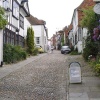 | 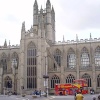 | 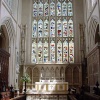 |  | 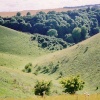 | 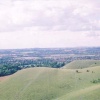 |
rustyruth Posts: 18773 Joined: 23rd Oct 2012 Location: England | Posted at 19:02 on 18th October 2013 No need to apologise John, glad to see you got a music question right As for your quizzy, I'm going to stick near you at the moment and guess at Kent. I'll have to try and fathom out the what if I'm anywhere near correct. |
rustyruth Posts: 18773 Joined: 23rd Oct 2012 Location: England | Posted at 19:05 on 18th October 2013 Just had a thought, our eldest son lives in Lower Saxony in Germany and I've seen a rampant white horse on a coat of arms over there, now I'm wondering if there is a connection between the two somewhere in history ? |
rustyruth Posts: 18773 Joined: 23rd Oct 2012 Location: England | Posted at 20:25 on 18th October 2013 The word Invictus keeps bobbing around in my head, heaven knows why. I'll have to have a think about this. That's if Ken doesn't nip in first  |
| Dave John Posts: 22335 Joined: 27th Feb 2011 Location: England | Posted at 23:51 on 18th October 2013 Well, I ain't got a clue..... so will leave this to you history buffs |
rustyruth Posts: 18773 Joined: 23rd Oct 2012 Location: England | Posted at 13:46 on 19th October 2013 OK so we have the Battle of Hastings, I'm loath to Google this, but I do have a room full of history books which I'm going to have to consult. I'll be back  |
rustyruth Posts: 18773 Joined: 23rd Oct 2012 Location: England | Posted at 15:06 on 19th October 2013 So far I've found out that the white horse is the old symbol for the Jutish Kingdom of Kent, dating back to the 6th - 8th century. But that is before you clue of 1066 John, so more research is required. I'm thinking did King Harold have a white horse ? |
rustyruth Posts: 18773 Joined: 23rd Oct 2012 Location: England | Posted at 15:24 on 19th October 2013 Well I've found the history behind 'Invcta' which was bugging me. In 1067 The Normans under William the Conqueror having defeated King Harold at the Battle of Hastings were marching towards London before going on to Winchester which was then the capital. According to history, near to the village of Swanscombe, William and his men were met by the Kentishmen lead by Archbishop Stigand and the Abbot of St. Augustines. Each of the men from Kent carried a bough giving the appearance of a moving forest descending rapidly on the Normans. At a given signal, the boughs were thrown aside revealing the men from Kent armed and ready for battle. The Archbishop and Abbot met with William and assured him of their allegiance, so long as he was willing to grant certain privileges to the people of Kent and to respect their ancient rights and traditions. So that's the invicta problem sorted, now to the horse which so far is leaving me a bit puzzled as it seems to date from much earlier. Edited by: rustyruth at:19th October 2013 15:27 |
rustyruth Posts: 18773 Joined: 23rd Oct 2012 Location: England | Posted at 15:33 on 19th October 2013 This horse is a puzzle. It appears it was the emblem on the flag of two Germanic brothers Horsa and Hengest who arrived in Kent in 449, founding the Kingdom of Kent. |
rustyruth Posts: 18773 Joined: 23rd Oct 2012 Location: England | Posted at 16:05 on 19th October 2013 Thank you John, it took a bit of sorting out. I'll be back later when I've had a think. |
rustyruth Posts: 18773 Joined: 23rd Oct 2012 Location: England | Posted at 16:26 on 19th October 2013 Here we go I was originally built as a small fortress in 889, then I was ignored until my ruins were renovated and rebuilt in the mid 11th century. I am now very famous and a very popular tourist attraction. |